($20):  The brother and sister-run Tenute Soletta is a new estate by Italian standards, having been created in 1996. They use only their own grapes and focus on this Vermentino and a similarly delicious Cannonau. This Vermentino spends about seven months on the lees, which likely accounts, at least in part, for its richness. … Read more
The brother and sister-run Tenute Soletta is a new estate by Italian standards, having been created in 1996. They use only their own grapes and focus on this Vermentino and a similarly delicious Cannonau. This Vermentino spends about seven months on the lees, which likely accounts, at least in part, for its richness. … Read more
Category Archives: Italy
Tenute Soletta, Cannonau di Sardegna (Sardinia, Italy) “Sardo” 2016
($24): 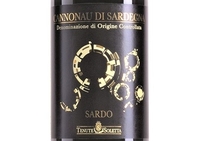 This Cannonau (also known as Garnacha or Grenache), displays a dark, haunting profile with slightly funky, in a nice way, accents. Dark fruit flavors are apparent and balance the savory elements in this chewy wine. This is a weighty, but not heavy, wine perfect for a hearty meal on a winter day or to serve with robust fare from the grill.… Read more
This Cannonau (also known as Garnacha or Grenache), displays a dark, haunting profile with slightly funky, in a nice way, accents. Dark fruit flavors are apparent and balance the savory elements in this chewy wine. This is a weighty, but not heavy, wine perfect for a hearty meal on a winter day or to serve with robust fare from the grill.… Read more
Celli, Bertinaro Romagna DOC (Emilia Romagna) Sangiovese Riserva, “Bron & Rusèval” 2017
($28):  Since Sangiovese, a grape associated with Tuscany, is the most widely planted grape in Italy, it is not surprising to find excellent wines made from it outside of that region. Here’s one such example from nearby Romagna, which Mauro Sirri, the owner of Celli, is quick to identify as distinct from Emilia: “They’re known for Lambrusco; we’re known for dry wines.” … Read more
Since Sangiovese, a grape associated with Tuscany, is the most widely planted grape in Italy, it is not surprising to find excellent wines made from it outside of that region. Here’s one such example from nearby Romagna, which Mauro Sirri, the owner of Celli, is quick to identify as distinct from Emilia: “They’re known for Lambrusco; we’re known for dry wines.” … Read more
2016 Brunello di Montalcino: Don’t Miss Them
The great success of the 2016 vintage throughout Tuscany suggested that the just-released 2016 Brunello would be memorable. Is it ever! To my mind, it is, by far, the best vintage since 2010. I certainly prefer the 2016s in general to the more powerful and overdone Brunello from the much-hyped 2015 vintage. … Read more
Il Colle, Conegliano Valdobbiadene Prosecco Superiore DOCG (Veneto, Italy) Brut NV
($20): 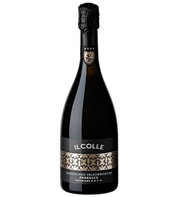 Established in 1978, Il Colle remains a family-run estate that produces an array of Prosecco. This one shows the beauty of the DOCG, Conegliano Valdobbiadene Prosecco Superiore, compared to a straight DOC Prosecco. It has a finesse and refinement that most DOC Prosecco just don’t deliver. … Read more
Established in 1978, Il Colle remains a family-run estate that produces an array of Prosecco. This one shows the beauty of the DOCG, Conegliano Valdobbiadene Prosecco Superiore, compared to a straight DOC Prosecco. It has a finesse and refinement that most DOC Prosecco just don’t deliver. … Read more
Isola Augusta, Trevenezie IGP (Veneto, Italy) Schioppettino 2019
($20):  Founded in 1959 by Renzo Bassani, the third generation of the that environmentally-conscious family is now involved. They gradually expanded to about 125 acres of vineyards, which provide sufficient fruit for all their wines. Indeed, they sell some of their grapes to their neighbors. … Read more
Founded in 1959 by Renzo Bassani, the third generation of the that environmentally-conscious family is now involved. They gradually expanded to about 125 acres of vineyards, which provide sufficient fruit for all their wines. Indeed, they sell some of their grapes to their neighbors. … Read more
CaselFarneto, Verdicchio dei Castelli di Jesi Classico Superiore (Marche, Italy) Verdicchio “Fontevecchia” 2017
($15, Enotec Imports):  Verdicchio dei Castelli di Jesi is one of Italy’s great white wines that flies under most peoples’ radar. Italian wine regulators awarded the top category, Verdicchio dei Castelli di Jesi Riserva, DOCG status, showing the potential of the region. … Read more
Verdicchio dei Castelli di Jesi is one of Italy’s great white wines that flies under most peoples’ radar. Italian wine regulators awarded the top category, Verdicchio dei Castelli di Jesi Riserva, DOCG status, showing the potential of the region. … Read more
Lunae Bosoni, Colli di Luni DOC (Liguria, Italy) Vermentino “Etichetta Grigia” (Grey Label) 2020
($25, Montcalm Wine Importers):  Lunae Bosoni, one of Liguria’s top producers, consistently makes a stunning line up of Vermentino wines. The 2020 maintains that tradition. Riper than usual in this vintage, this nevertheless has very energetic acidity holds everything together. An intriguing and uplifting saline touch keeps you interested and invites another sip. … Read more
Lunae Bosoni, one of Liguria’s top producers, consistently makes a stunning line up of Vermentino wines. The 2020 maintains that tradition. Riper than usual in this vintage, this nevertheless has very energetic acidity holds everything together. An intriguing and uplifting saline touch keeps you interested and invites another sip. … Read more
Masciarelli, Trebbiano d’Abruzzo DOC (Italy) Trebbiano “Marina Cvetic” Riserva 2018
($58, Vintus):  Similar to its red counterpart, Montepulciano d’Abruzzo, Trebbiano d’Abruzzo can be grown all over the province and varies in quality from insipid to inspiring. As you would expect from a top producer, Masciarelli’s fits the latter category. Why the vast difference? … Read more
Similar to its red counterpart, Montepulciano d’Abruzzo, Trebbiano d’Abruzzo can be grown all over the province and varies in quality from insipid to inspiring. As you would expect from a top producer, Masciarelli’s fits the latter category. Why the vast difference? … Read more
Angelini, Prosecco Rosé DOC (Veneto, Italy) Brut 2020
($12):  Starting with the 2019 vintage, Prosecco Rosé is an official DOC. Initially, I suspected this category was a brilliant marketing maneuver combining two of the hottest wine categories today. However, producers have told me that Prosecco Rosé should be a premium product that will likely cost more. … Read more
Starting with the 2019 vintage, Prosecco Rosé is an official DOC. Initially, I suspected this category was a brilliant marketing maneuver combining two of the hottest wine categories today. However, producers have told me that Prosecco Rosé should be a premium product that will likely cost more. … Read more
Donnafugata, Etna Bianco DOC (Sicily, Italy) “Sul Vulcano” 2018
($24, Folio Fine Wine Partners):  The primary grape for Etna Bianco is Carricante, one that is unique to Sicily. Though people, rightly, associate red wine with Sicily, Carricante produces impressive and distinctive whites, especially when grown on the slopes of Mount Etna. … Read more
The primary grape for Etna Bianco is Carricante, one that is unique to Sicily. Though people, rightly, associate red wine with Sicily, Carricante produces impressive and distinctive whites, especially when grown on the slopes of Mount Etna. … Read more
Col d’Orcia, Brunello di Montalcino DOCG (Tuscany, Italy) 2016
($45, Taub Family Selections):  Col d’Orcia, one of the largest producers of Brunello di Montalcino, has proven, time and time again, that quality and quantity can go together. They did it again with their positively stellar 2016 Brunello. The 2016 vintage is outstanding throughout Tuscany.… Read more
Col d’Orcia, one of the largest producers of Brunello di Montalcino, has proven, time and time again, that quality and quantity can go together. They did it again with their positively stellar 2016 Brunello. The 2016 vintage is outstanding throughout Tuscany.… Read more
The Joys of Exploring Italian Wines
One of the many things I adore about Italian wine is its seemingly limitless depth. You can always uncover a wine area or category unbeknownst to you, even if it’s been known to the Italians themselves for decades. Take, for example, Albana Romagna. … Read more
Ai Galli, Delle Venezie DOC (Italy) Pinot Grigio 2019
($12): 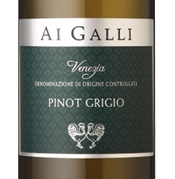 Ai Galli also shows their talents with a bargain-priced “entry-level,” as they call it, Pinot Grigio. Fresh and floral wine, it has a captivating delicacy. This clean crisp Pinot Grigio finishes with a welcoming hint of bitterness. And look at the price. … Read more
Ai Galli also shows their talents with a bargain-priced “entry-level,” as they call it, Pinot Grigio. Fresh and floral wine, it has a captivating delicacy. This clean crisp Pinot Grigio finishes with a welcoming hint of bitterness. And look at the price. … Read more
Cantina Kaltern, Kalterersee Classico Superiore DOC (Alto Adige, Italy) “Quintessenz” 2017
($34, Enotec Imports, Inc):  Since this DOC is not well-known to most Americans (I had to run to the reference books), a little background. The DOC is named for a large lake that lies within Alto Adige. “Classico,” as usual in the Italian DOC nomenclature, refers to the original or heart of the area. … Read more
Since this DOC is not well-known to most Americans (I had to run to the reference books), a little background. The DOC is named for a large lake that lies within Alto Adige. “Classico,” as usual in the Italian DOC nomenclature, refers to the original or heart of the area. … Read more
Celli, Romagna Albana Secco DOCG (Italy) “I Croppi” 2019
($20):  The Albana grape is uniquely suited to the Bertinoro subregion of Romagna where Celli is located thanks to the calcium rich soil, locally known as spungone, a vestige of its underwater location 3.5 million years ago. Celli’s 2019 I Croppi is outstanding. … Read more
The Albana grape is uniquely suited to the Bertinoro subregion of Romagna where Celli is located thanks to the calcium rich soil, locally known as spungone, a vestige of its underwater location 3.5 million years ago. Celli’s 2019 I Croppi is outstanding. … Read more
Domaine Antonin Guyon, Delle Venezie DOC (Italy) Pinot Grigio 2019
($12):  Ai Galli also shows their talents with a bargain-priced “entry-level,” as they call it, Pinot Grigio. Fresh and floral wine, it has a captivating delicacy. This clean crisp Pinot Grigio finishes with a welcoming hint of bitterness. And look at the price. … Read more
Ai Galli also shows their talents with a bargain-priced “entry-level,” as they call it, Pinot Grigio. Fresh and floral wine, it has a captivating delicacy. This clean crisp Pinot Grigio finishes with a welcoming hint of bitterness. And look at the price. … Read more
Cantina Sanpaolo, Greco di Tufo DOCG (Campania, Italy) 2017
($20, Enotec Imports, Inc):  Greco di Tufo, one of Italy’s premier white grapes, is rarely found outside its home in Campania. Sanpaolo’s is an excellent example, full-bodied, yet crisp. It is mineral-infused, reflecting the lava-like residue of Vesuvius. Its acidity imbues it with energy and magnifies its charms. … Read more
Greco di Tufo, one of Italy’s premier white grapes, is rarely found outside its home in Campania. Sanpaolo’s is an excellent example, full-bodied, yet crisp. It is mineral-infused, reflecting the lava-like residue of Vesuvius. Its acidity imbues it with energy and magnifies its charms. … Read more
Il Poggiolo, Brunello di Montalcino DOCG (Tuscany, Italy) 2015
($70, Enotec Imports, Inc):  A paradox, the traditionally framed Il Poggiolo Brunello marries the ripeness of the 2015 vintage with a lovely austerity. Not a blowsy wine, it combines dark cherry-like fruit with a core of minerals. Importantly, especially for the vintage, it has great acidity, which imparts a wonderful vivacity to the wine. … Read more
A paradox, the traditionally framed Il Poggiolo Brunello marries the ripeness of the 2015 vintage with a lovely austerity. Not a blowsy wine, it combines dark cherry-like fruit with a core of minerals. Importantly, especially for the vintage, it has great acidity, which imparts a wonderful vivacity to the wine. … Read more
Donnafugata, Terre Siciliane IGT (Sicily, Italy) “Tancredi” 2016
($39, Folio Fine Wine Partners):  While Donnafugata maintains a traditional focus on indigenous Sicilian grapes, such as Nero d’Avola, they also have planted international ones, such as Cabernet Sauvignon, and unusual ones, such as Tannat. Those three grapes comprise the majority of the blend of Tancredi. … Read more
While Donnafugata maintains a traditional focus on indigenous Sicilian grapes, such as Nero d’Avola, they also have planted international ones, such as Cabernet Sauvignon, and unusual ones, such as Tannat. Those three grapes comprise the majority of the blend of Tancredi. … Read more
Donnafugata, Cerasuolo di Vittoria DOCG (Sicily, Italy) “Floramundi” 2017
($30, Folio Fine Wine Partners):  Cerasuolo di Vittoria, located in southeastern Sicily, is that island’s only DOCG wine. Regulations require that Nero d’Avola comprise at least 50, but no more than 70, percent of the blend. Frappato fills out the blend. … Read more
Cerasuolo di Vittoria, located in southeastern Sicily, is that island’s only DOCG wine. Regulations require that Nero d’Avola comprise at least 50, but no more than 70, percent of the blend. Frappato fills out the blend. … Read more
Fanetti – Tenuta S. Agnese, Vino Nobile di Montepulciano DOCG (Tuscany, Italy) Riserva 2015
($33, Enotec Imports, Inc):  Fanetti, one of the great names for Vino Nobile di Montepulciano, has produced a fabulous 2015 Riserva from their Tenuta S. Agnese estate. Traditionally framed, that is, not all gussied up with oak and over ripe fruit, the dark cherry-like fruit of Sangiovese shines. … Read more
Fanetti, one of the great names for Vino Nobile di Montepulciano, has produced a fabulous 2015 Riserva from their Tenuta S. Agnese estate. Traditionally framed, that is, not all gussied up with oak and over ripe fruit, the dark cherry-like fruit of Sangiovese shines. … Read more
Buli, Toscana IGT (Tuscany, Italy) “Estate 44” 2016
($20, Dark Star Imports):  Estate 44 pays tribute to the Allied soldiers, including the owner’s father, who liberated Tuscany in the summer of 1944. A blend of Sangiovese (60%) Cabernet Sauvignon (20%) and equal amounts of Syrah and Merlot, it is more muscular than Buli’s 515 bottling, but has the same grace, suaveness and structure. … Read more
Estate 44 pays tribute to the Allied soldiers, including the owner’s father, who liberated Tuscany in the summer of 1944. A blend of Sangiovese (60%) Cabernet Sauvignon (20%) and equal amounts of Syrah and Merlot, it is more muscular than Buli’s 515 bottling, but has the same grace, suaveness and structure. … Read more
Buli, Toscana IGT (Tuscany, Italy) Sangiovese “515” 2016
($20, Dark Star Imports):  Robert Buly, an American who owns Buli, was drawn to Italy by heritage: his father married an Italian woman from Tuscany soon after WWII ended. On their website, he jokes that his father met his mother while on the search for red wine to drink. … Read more
Robert Buly, an American who owns Buli, was drawn to Italy by heritage: his father married an Italian woman from Tuscany soon after WWII ended. On their website, he jokes that his father met his mother while on the search for red wine to drink. … Read more
Cecchi, Chianti Classico Riserva DOCG (Tuscany, Italy) “Riserva di Famiglia” 2016
($48, Terlato): 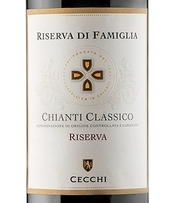 Cecchi is one of the great names for Tuscan wines, especially Chianti Classico. Combine their talents with a great vintage, like 2016, and, unsurprisingly, you have a truly fine wine. It conveys both the charm and power of a Chianti Classico Riserva reinforced and amplified by great acidity, a characteristic of the vintage. … Read more
Cecchi is one of the great names for Tuscan wines, especially Chianti Classico. Combine their talents with a great vintage, like 2016, and, unsurprisingly, you have a truly fine wine. It conveys both the charm and power of a Chianti Classico Riserva reinforced and amplified by great acidity, a characteristic of the vintage. … Read more
Cecchi, Chianti Classico DOCG Gran Selezione (Tuscany, Italy) “Valore di Famiglia” 2016
($65): 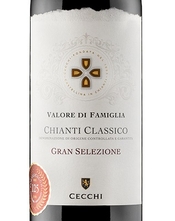 Gran Selezione is a relatively new category of Chianti Classico. It sits at the pinnacle of the quality pyramid, above Riserva. Regulations require, among other things, that the grapes come entirely from the producers’ vineyards — no purchased fruit is allowed — and that the wine must be aged for 30 months before release, compared to 24 months for Riserva. … Read more
Gran Selezione is a relatively new category of Chianti Classico. It sits at the pinnacle of the quality pyramid, above Riserva. Regulations require, among other things, that the grapes come entirely from the producers’ vineyards — no purchased fruit is allowed — and that the wine must be aged for 30 months before release, compared to 24 months for Riserva. … Read more
Masciarelli, Montepulciano d’Abruzzo Riserva DOC (Italy) “Marina Cvetic” 2016
($27, Vintus): 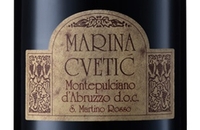 Montepulciano d’Abruzzo has nothing to do with Vino Nobile di Montepulciano. The former is a grape, the latter a village whose wines, curiously enough, are made from Sangiovese. The quality and price of Montepulciano d’Abruzzo is vast, from thin swill to monumental wine, which makes it a mine field when selecting wines. … Read more
Montepulciano d’Abruzzo has nothing to do with Vino Nobile di Montepulciano. The former is a grape, the latter a village whose wines, curiously enough, are made from Sangiovese. The quality and price of Montepulciano d’Abruzzo is vast, from thin swill to monumental wine, which makes it a mine field when selecting wines. … Read more
Masciarelli, Colline Teramane DOCG (Abruzzo, Italy) “Marina Cvetic Iskra” 2015
($35, Vintus): 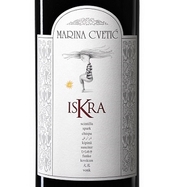 Colline Teramane is the sole DOCG (Italy’s highest wine category) in Abruzzo, and shows the heights the Montepulciano grape can achieve when planted in the right place by the right people. This one, unsurprisingly, since it comes from Mascareilli, one of the region’s top producers, is stunning. … Read more
Colline Teramane is the sole DOCG (Italy’s highest wine category) in Abruzzo, and shows the heights the Montepulciano grape can achieve when planted in the right place by the right people. This one, unsurprisingly, since it comes from Mascareilli, one of the region’s top producers, is stunning. … Read more
Castello di Fonterutoli, Leading the Way
With the release of a trio of 2017 Gran Selezione wines, Castello di Fonterutoli is leading the way, showing the importance of terroir—site specificity—in Chianti Classico. Chianti Classico producers have long proclaimed that there are major differences among the wines produced in the region’s nine subzones. … Read more
Castello di Fonterutoli, Chianti Classico DOCG Gran Selezione (Tuscany, Italy) “Badiòla” 2017
($99, Taub Family Selections): 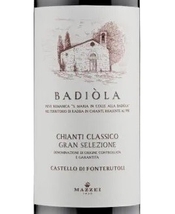 Giovanni Mazzei, Fonterutoli’s export manager, believes that the vineyard’s southern exposure and high elevation (almost 1900 feet above sea level) combines great sunlight with large diurnal temperature variation, the combination of which results in ripeness and freshness. … Read more
Giovanni Mazzei, Fonterutoli’s export manager, believes that the vineyard’s southern exposure and high elevation (almost 1900 feet above sea level) combines great sunlight with large diurnal temperature variation, the combination of which results in ripeness and freshness. … Read more
Castello di Fonterutoli, Chianti Classico DOCG Gran Selezione (Tuscany, Italy) “Vicoregio 36” 2017
($99): 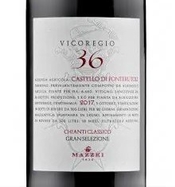 The Mazzei family planted 36 biotypes of Sangiovese in their Vicoregio vineyard in Castelnuovo Berardenga. Hence the name of the wine. This one, the deepest of the trio, conveys black cherry-like flavors, bordering on plumy ones, reflecting the warmth of Castelnuovo Berardenga. … Read more
The Mazzei family planted 36 biotypes of Sangiovese in their Vicoregio vineyard in Castelnuovo Berardenga. Hence the name of the wine. This one, the deepest of the trio, conveys black cherry-like flavors, bordering on plumy ones, reflecting the warmth of Castelnuovo Berardenga. … Read more
Castello di Fonterutoli, Chianti Classico DOCG Gran Selezione (Tuscany, Italy) “Castello Fonterutoli” 2017
($74, Taub Family Selections): 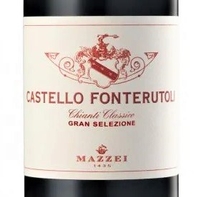 The grapes for “Castello Fonterutoli” come from 11 different plots around the hamlet of Fonterutoli. Each plot is vinified separately, allowing precision in constructing the blend. The 2017 is the first year the wine was made entirely from Sangiovese. … Read more
The grapes for “Castello Fonterutoli” come from 11 different plots around the hamlet of Fonterutoli. Each plot is vinified separately, allowing precision in constructing the blend. The 2017 is the first year the wine was made entirely from Sangiovese. … Read more
Col d’Orcia, Sant’Antimo DOC (Tuscany, Italy) “Rosso Col d’Orcia” 2014
($25, Taub Family Selections): 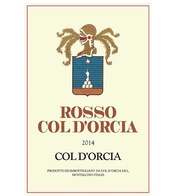 Col d’Orcia, best known for their stunning Brunello di Montalcino, makes other wines. At first glance at the label, you might think this is their Rosso di Montalcino. It’s not. Also, don’t be put off by the 2014 vintage, which was, as the Italians themselves describe it, “difficult.” … Read more
Col d’Orcia, best known for their stunning Brunello di Montalcino, makes other wines. At first glance at the label, you might think this is their Rosso di Montalcino. It’s not. Also, don’t be put off by the 2014 vintage, which was, as the Italians themselves describe it, “difficult.” … Read more
Travaglino, Oltrepò Pavese DOC (Lombardy, Italy) Pinot Nero Poggio della Butinera Riserva 2015
($42): 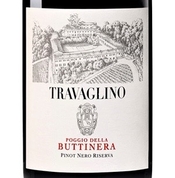 Italy is not known for Pinot Nero (aka Pinot Noir) the way it is for Nebbiolo or Sangiovese. In the relatively cool Oltrepò Pavese region, the grape does well, as Travaglino shows with this 2015 Riserva. Nicely concentrated, but certainly nowhere near a New World style, it delivers both fruit flavors and savory character, the latter of which is immediately apparent in the nose and carries onto the palate. … Read more
Italy is not known for Pinot Nero (aka Pinot Noir) the way it is for Nebbiolo or Sangiovese. In the relatively cool Oltrepò Pavese region, the grape does well, as Travaglino shows with this 2015 Riserva. Nicely concentrated, but certainly nowhere near a New World style, it delivers both fruit flavors and savory character, the latter of which is immediately apparent in the nose and carries onto the palate. … Read more
Agricola Punica, Isola del Nuraghi IGT (Sardinia, Italy) “Barrua” 2015
($46): 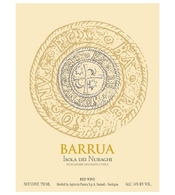 Agricola Punica is a collaboration between Tenuta San Guido, the Bolgheri producer responsible for Sassicaia, and Sardinia’s Cantina di Santadi. The late Giacomo Tachis, who was a genius at sensing the utility of the so-called Bordeaux varieties in selected Italian locales, suggested the blend of Carignano, Cabernet Sauvignon and Merlot for their wine to be called “Barrua.” … Read more
Agricola Punica is a collaboration between Tenuta San Guido, the Bolgheri producer responsible for Sassicaia, and Sardinia’s Cantina di Santadi. The late Giacomo Tachis, who was a genius at sensing the utility of the so-called Bordeaux varieties in selected Italian locales, suggested the blend of Carignano, Cabernet Sauvignon and Merlot for their wine to be called “Barrua.” … Read more
Cascina Castlet, Barbera d’Asti DOCG (Piedmont, Italy) “Vespa” 2019
($35, Artisan Selections by Romano Brands): 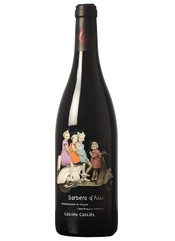 Barbera is a terrific wine for a meal because the grape has inherently high acidity, which makes it lively and perfect for food. Its problem is image. When consumers see many on retailers’ shelves selling for less than $10 a bottle, the question is, why spend more? … Read more
Barbera is a terrific wine for a meal because the grape has inherently high acidity, which makes it lively and perfect for food. Its problem is image. When consumers see many on retailers’ shelves selling for less than $10 a bottle, the question is, why spend more? … Read more
Cascina Castlet, Barbera d’Asti DOCG (Piedmont, Italy) “Litina” 2016
($40, Artisan Selections by Romano Brands): 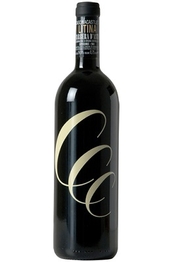 The label sports CCC in bold letters on the bottle, the abbreviation of the winery, Cascina Caslet, plus the village, Costigliole, where it’s located. The important information can be found on the neck label. Similar to their Vespa bottling, the Litinia, named after a family member, is a robust wine that delivers black fruitiness buttressed by zippy acidity. … Read more
The label sports CCC in bold letters on the bottle, the abbreviation of the winery, Cascina Caslet, plus the village, Costigliole, where it’s located. The important information can be found on the neck label. Similar to their Vespa bottling, the Litinia, named after a family member, is a robust wine that delivers black fruitiness buttressed by zippy acidity. … Read more
Gianni Gagliardo, Barolo DOCG (Piedmont, Italy) Castelletto 2013
($100, Enotec Imports / Blair Taylor Selection Denver): 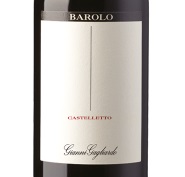 The village of Monforte d’Alba, where the Castelletto vineyard is located, is a Barolo zone that typically produces weighty and muscular wines, similar to those from Serralunga d’Alba. So, I was surprised by lovely fragrance and elegance that emanated from Gagliardo’s bottling. … Read more
The village of Monforte d’Alba, where the Castelletto vineyard is located, is a Barolo zone that typically produces weighty and muscular wines, similar to those from Serralunga d’Alba. So, I was surprised by lovely fragrance and elegance that emanated from Gagliardo’s bottling. … Read more
Palladino, Barolo DOCG (Piedmont, Italy) S. Bernardo Riserva 2013
($88, Enotec Imports / Blair Taylor Selection Denver): 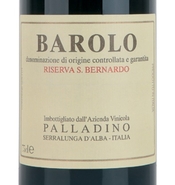 Though the 2016 vintage in Barolo has been receiving great critical acclaim — rightfully so — other vintages from that DOCG are not far behind. Case in point, this 2013 from Palladino, based in Serralunga d’Alba, a Barolo zone known for tannic and tough wines. … Read more
Though the 2016 vintage in Barolo has been receiving great critical acclaim — rightfully so — other vintages from that DOCG are not far behind. Case in point, this 2013 from Palladino, based in Serralunga d’Alba, a Barolo zone known for tannic and tough wines. … Read more
Barone Sergio, Eloro DOC (Sicily, Italy) Nero d’Avola “Sergio” 2018
($21, Artisanal Cellars): 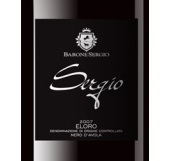 “Eloro is a grand cru for Nero d’Avola,” according to Ian d’Agata, one of the world’s foremost authorities on Italian wines. Barone Sergio has 75 acres of vineyards, two-thirds of which are devoted to that grape, one of Sicily’s most important varieties. … Read more
“Eloro is a grand cru for Nero d’Avola,” according to Ian d’Agata, one of the world’s foremost authorities on Italian wines. Barone Sergio has 75 acres of vineyards, two-thirds of which are devoted to that grape, one of Sicily’s most important varieties. … Read more
Tenuta Carretta, Roero DOCG (Piedmont, Italy) “Bric Paradiso” Riserva 2015
($55, Blicker Pierce Wagner Wine Merchants): 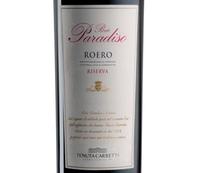 Roero, located on the left bank of the Tanaro River, across from the Langhe, produces lighter Nebbiolo-based wines compared to those from across the river due to a generally lighter soil. This, a fragrant beauty, has the Burgundian sensibility I call, “flavor without weight.” … Read more
Roero, located on the left bank of the Tanaro River, across from the Langhe, produces lighter Nebbiolo-based wines compared to those from across the river due to a generally lighter soil. This, a fragrant beauty, has the Burgundian sensibility I call, “flavor without weight.” … Read more
Tenuta Carretta, Barbaresco DOCG (Piedmont, Italy) “Garassino” 2016
($50, Consortium Wine & Spirits Imports): 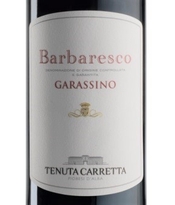 Tenuta Carretta is the sole owner of 11.5-acre Garassino vineyard, a recognized MGA (Menzione Geografica Aggiuntiva) or “cru” in the Treiso part of the Barbaresco zone. It’s what the French would call a monopole. Their well-price 2016 is elegant and understated. … Read more
Tenuta Carretta is the sole owner of 11.5-acre Garassino vineyard, a recognized MGA (Menzione Geografica Aggiuntiva) or “cru” in the Treiso part of the Barbaresco zone. It’s what the French would call a monopole. Their well-price 2016 is elegant and understated. … Read more
Boscarelli, Vino Nobile di Montepulciano DOCG (Tuscany, Italy) Il Nocio 2016
($159, Empson USA): 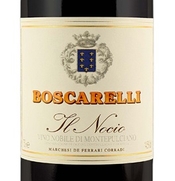 The 2016 Il Nocio is an extraordinary wine. Boscarelli is one of the top producers — some would say THE top producer — of Vino Nobile di Montepulciano. Il Nocio, from the vineyard of the same name, is their top wine. … Read more
The 2016 Il Nocio is an extraordinary wine. Boscarelli is one of the top producers — some would say THE top producer — of Vino Nobile di Montepulciano. Il Nocio, from the vineyard of the same name, is their top wine. … Read more
Colle Santa Mustiola di Fabio Cenni, Toscana IGT (Tuscany, Italy) Sangiovese Poggio ai Chiari 2011
($80, Selezioni Varietali): 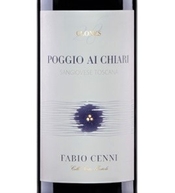 This is my first encounter with this producer, but it certainly will not be my last given the quality of this wine. Their importer tells me Cenni’s focus is Sangiovese, with their 12 acres planted entirely with 28 clones of that variety. … Read more
This is my first encounter with this producer, but it certainly will not be my last given the quality of this wine. Their importer tells me Cenni’s focus is Sangiovese, with their 12 acres planted entirely with 28 clones of that variety. … Read more
Bocale di Valentini, Montefalco Sagrantino DOCG (Umbria, Italy) “Bocale” 2015
($47, Tradizione Imports): 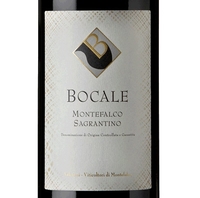 The Sagrantino grape does not make wimpy wines. So, there’s no surprise that this one is big and bold, weighing in at 15.5 percent stated-alcohol. And, as expected from wines from this DOCG, its tannic youthfulness is in evidence. … Read more
The Sagrantino grape does not make wimpy wines. So, there’s no surprise that this one is big and bold, weighing in at 15.5 percent stated-alcohol. And, as expected from wines from this DOCG, its tannic youthfulness is in evidence. … Read more
Boscarelli, Vino Nobile di Montepulciano DOCG (Tuscany, Italy) Il Nocio 2016
 ($159, Empson USA): The 2016 Il Nocio is an extraordinary wine. Boscarelli is one of the top producers — some would say THE top producer — of Vino Nobile di Montepulciano. Il Nocio, from the vineyard of the same name, is their top wine.
($159, Empson USA): The 2016 Il Nocio is an extraordinary wine. Boscarelli is one of the top producers — some would say THE top producer — of Vino Nobile di Montepulciano. Il Nocio, from the vineyard of the same name, is their top wine. Pietro Beconcini, Toscana IGT (Tuscany, Italy) “Reciso” 2015
($35, Beivuma Wines): 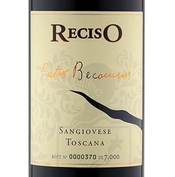 Beconcini, located in San Miniato, a small town halfway between Pisa and Florence, makes range of wines from a Chianti to this one, his top of the line. Made entirely from organically-grown Sangiovese, it’s a beauty, probably, in part at least, because of the age of the vines. … Read more
Beconcini, located in San Miniato, a small town halfway between Pisa and Florence, makes range of wines from a Chianti to this one, his top of the line. Made entirely from organically-grown Sangiovese, it’s a beauty, probably, in part at least, because of the age of the vines. … Read more
Colle Santa Mustiola di Fabio Cenni, Toscana IGT (Tuscany, Italy) Sangiovese Poggio ai Chiari 2011
($80, Selezioni Varietali):  This is my first encounter with this producer, but it certainly will not be my last given the quality of this wine. Their importer tells me Cenni’s focus is Sangiovese, with their 12 acres planted entirely with 28 clones of that variety. … Read more
This is my first encounter with this producer, but it certainly will not be my last given the quality of this wine. Their importer tells me Cenni’s focus is Sangiovese, with their 12 acres planted entirely with 28 clones of that variety. … Read more
Usiglian del Vescovo, Terre di Pisa DOC (Tuscany, Italy) “Il Barbiglione” 2015
($32, Wine Worldwide Inc): 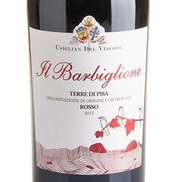 The Terre di Pisa DOC is not even a decade old, having been founded only in 2011. It’s a tiny area (less than 150 acres) with only a handful of producers, surrounding the Tuscan town of Pisa on Italy’s west coast, north of Bolgheri. … Read more
The Terre di Pisa DOC is not even a decade old, having been founded only in 2011. It’s a tiny area (less than 150 acres) with only a handful of producers, surrounding the Tuscan town of Pisa on Italy’s west coast, north of Bolgheri. … Read more
Castello La Leccia, Chianti Classico Gran Selezione (Tuscany, Italy) “Bruciagna” 2015
($40, Ideal Wine): 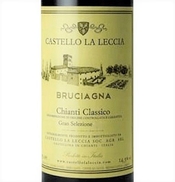 Gran Selezione, a category introduced a decade ago, sits at the pinnacle of the Chianti Classico quality pyramid, above Riserva. To qualify for this distinction, the wine must come from the producer’s estate — no purchased grapes allowed — be aged for a minimum of 30 months, and receive approval from a tasting panel. … Read more
Gran Selezione, a category introduced a decade ago, sits at the pinnacle of the Chianti Classico quality pyramid, above Riserva. To qualify for this distinction, the wine must come from the producer’s estate — no purchased grapes allowed — be aged for a minimum of 30 months, and receive approval from a tasting panel. … Read more
